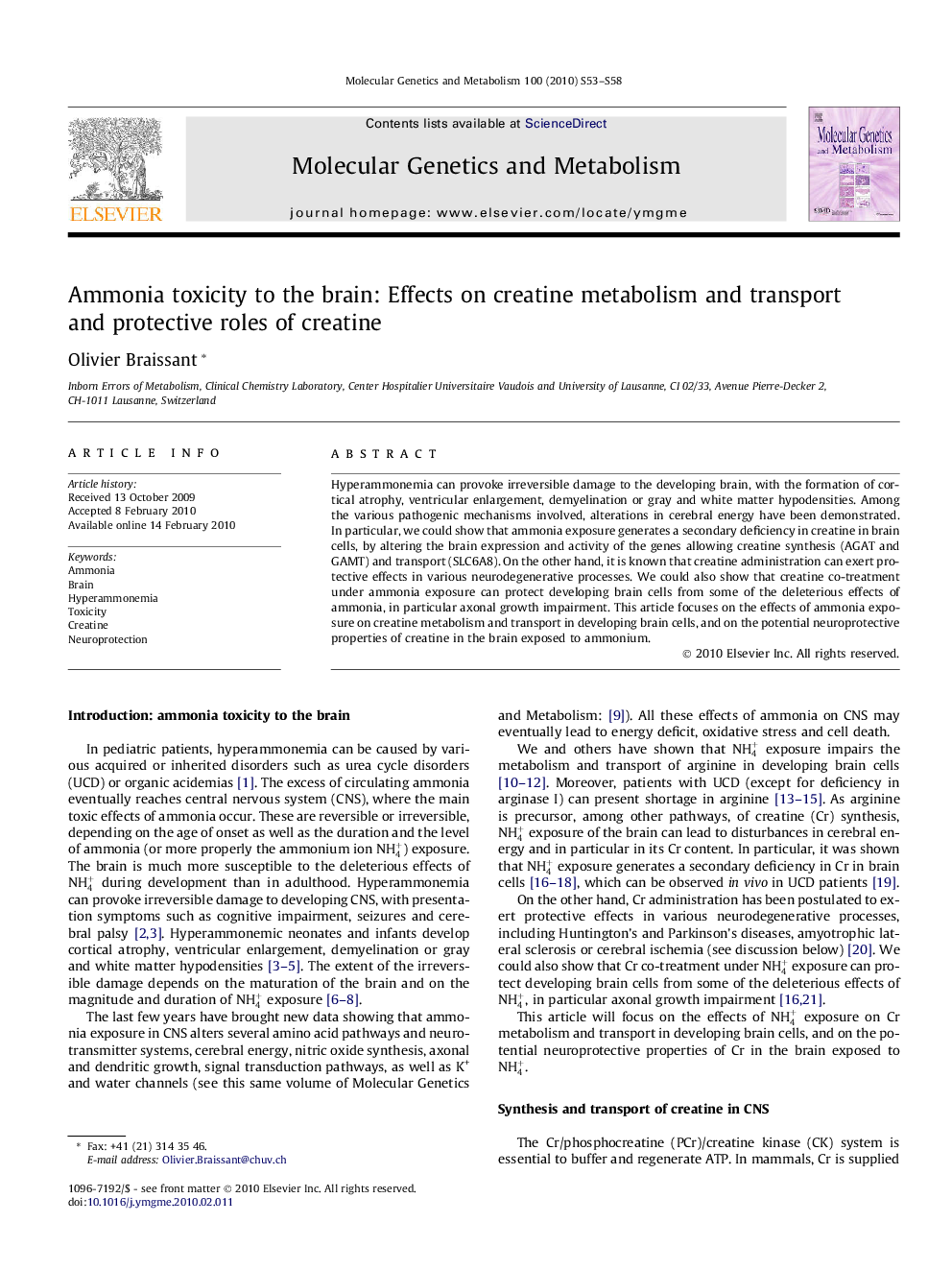| Article ID | Journal | Published Year | Pages | File Type |
|---|---|---|---|---|
| 1999592 | Molecular Genetics and Metabolism | 2010 | 6 Pages |
Hyperammonemia can provoke irreversible damage to the developing brain, with the formation of cortical atrophy, ventricular enlargement, demyelination or gray and white matter hypodensities. Among the various pathogenic mechanisms involved, alterations in cerebral energy have been demonstrated. In particular, we could show that ammonia exposure generates a secondary deficiency in creatine in brain cells, by altering the brain expression and activity of the genes allowing creatine synthesis (AGAT and GAMT) and transport (SLC6A8). On the other hand, it is known that creatine administration can exert protective effects in various neurodegenerative processes. We could also show that creatine co-treatment under ammonia exposure can protect developing brain cells from some of the deleterious effects of ammonia, in particular axonal growth impairment. This article focuses on the effects of ammonia exposure on creatine metabolism and transport in developing brain cells, and on the potential neuroprotective properties of creatine in the brain exposed to ammonium.
